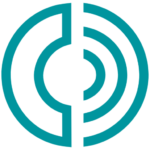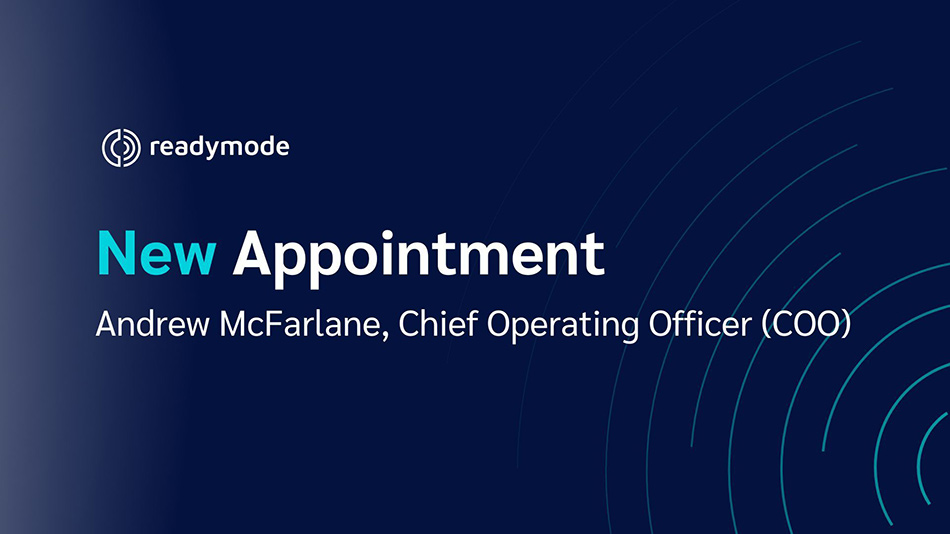The call center industry is constantly changing, driven by new technology, evolving customer expectations, and the expanding global market. To succeed in 2025 and beyond, businesses and professionals need to stay ahead of the curve.
In this blog post, we will dive into the most impactful call center statistics, trends, and best practices shaping the industry today. These valuable insights will help you not just survive, but thrive in the year ahead.
Key Findings
- The call center industry has embraced remote work, leading to cost savings, higher productivity, and more satisfied employees.
- Delivering exceptional customer service is crucial for building brand loyalty and driving business growth.
- Data analytics can help businesses gain valuable insights into agent performance, customer satisfaction, and overall efficiency.
- The call center industry is growing rapidly due to increasing demand for customer service across various industries.
- Outbound calling remains a valuable tool for sales, lead generation, and customer engagement.
- From cloud-based solutions to automation tools, technology is transforming call center operations.
- Well-trained and engaged agents are critical for delivering strong customer service and achieving business goals.
24 Most Impactful Call Center Statistics & Trends
Let’s take a close look at 24 call center statistics and trends that every industry professional should know heading into 2025.
Remote Work is Here to Stay
While the pandemic affected many areas of our daily lives, it also fast-tracked the transition to remote work. Remote work offers more flexibility, cost savings, and improved work-life balance, making it the preferred option for both employers and employees.
1. Deloitte reports that 73% of call center leaders intend to offer long-term remote or hybrid work options, with the aim of improving agent recruitment and retention.
2. 81% of agents prefer remote work, citing improved work-life balance and reduced commute times compared to working on-site.
3. Companies can save more than $11,000 per employee annually when employees work remotely half the time. Cost savings for fully remote employees could be even higher.
4. A Stanford University study found that performance can increase by 13% when call center agents work from home.
Customer Satisfaction is Everything
Providing excellent customer service remains a top priority, as it directly impacts brand loyalty and business growth. Customers expect fast, efficient, and personalized interactions, making it crucial for call centers to exceed expectations.
5. Microsoft found that 96% of customers say customer service significantly impacts their loyalty to a brand. This highlights how customer satisfaction can directly impact a business’ bottom line.
6. 93% of customers expect agents to resolve their questions or issues on the first call. To meet customer expectations, businesses must track and optimize their first call resolution rate (FCR).
7. 80% of customers are more likely to do business with a company that offers personalized experiences, based on the customer’s preferences and past interactions.
8. In fact, 71% of consumers expect companies to provide personalized interactions, and 76% get frustrated when this doesn’t happen.
Data Analytics Drives Decision Making
Leveraging data analytics empowers call centers to gain valuable insights and make informed decisions. By analyzing customer behavior, agent performance, and operational metrics, businesses can optimize their strategies and achieve ongoing improvement.
9. According to Deloitte, 81% of call center leaders have invested in voice and text analytics for insights to improve customer experience and quality assurance.
10. Call centers can improve decision-making by 36% using big data analytics to identify new sales and customer experience opportunities.
The Global Call Center Market is Expanding
The call center industry is experiencing substantial growth worldwide, driven by the increasing need for customer service and support. This expansion presents significant opportunities for businesses and professionals in the industry.
11. The global call center market is projected to reach $496 billion USD by 2027.
12. Asia Pacific continues to lead the global call center outsourcing market, accounting for over 23% of the total market share in 2024. This is largely attributed to the region’s focus on scalability and innovation.
13. Moreover, the United States call center industry is experiencing steady growth, with a compound annual growth rate (CAGR) of 7.2% from 2019–2024.
Outbound Calling Remains Relevant
Outbound calling continues to play a vital role in sales, lead generation, and customer engagement. By strategically integrating outbound calling with other channels and leveraging technology, businesses can achieve better results.
14. Companies that use cold calling experience 42% more growth than companies who don’t, keeping it as one of the top sales strategies for high-growing companies.
15. 49% of buyers prefer to be contacted by sellers through phone calls for initial sales conversations, especially tech, C-level, and VP buyers.
16. 63% of sales representatives use outbound calling to drive sales in 2024. If outbound calling isn’t part of your current sales strategy, it’s time to include it.
Technology Enhances Efficiency and Productivity
Advancements in technology are transforming the call center landscape, leading to greater efficiency and productivity. Cloud-based solutions and automated dialing systems are improving customer experiences and streamlining operations.
17. The adoption of cloud-based call center solutions is witnessing a significant surge, with 66% of call centers expected to transition to cloud platforms by 2024. This is largely credited to the improved flexibility, efficiency, and productivity that cloud-based solutions offer.
18. Automated dialing systems, like predictive dialers, can improve agent productivity by up to 300%. In other words, these dialers help agents spend more time talking and less time waiting.
19. Gartner predicts that 10% of agent interactions will be automated by 2026, freeing agents to focus on complex tasks and customer issues.
Agent Training and Engagement is Key
Well-trained and engaged agents are essential for delivering exceptional customer service. Investing in agent development, providing ongoing training, and fostering a positive work environment lead to higher productivity and customer satisfaction.
20. 31% of customers consider knowledgeable agents to be key to a positive customer experience, emphasizing the importance of strong agent training and resources.
21. Given the growing capabilities of technology, 91% of learning and development experts agree that soft skills are increasingly important. This includes interpersonal, problem solving, and people management skills.
22. According to McKinsey, engaged and satisfied call center agents are 8.5 times more likely to stay than leave their employer within a year.
23. Engaged and satisfied call center agents are also 3.3 times more likely to feel ‘extremely empowered’ to resolve customer problems—keeping both agents and customers happy.
24. And most importantly, companies with engaged employees outperform companies without by up to 202%.
Call Center Challenges, Opportunities & Best Practices for 2025
As the call center industry changes, it presents new challenges and opportunities for businesses to address. Here’s a look at some of the key factors that will shape the industry’s future, based on recent call center statistics and trends.
Adapting to Remote Work
The shift towards remote work offers many benefits, including cost savings, improved employee satisfaction, and access to more skilled workers. However, businesses must prepare to manage remote teams and maintain team cohesion. It is also crucial to develop new metrics and strategies to track and evaluate agent performance in a remote setting.
Tips & Best Practices
- Remote Work Infrastructure: Provide reliable VPNs, communication tools (like video conferencing and instant messaging platforms), and cloud-based call center software to enable seamless remote operations.
- Monitor and Support: Regularly assess remote agent performance using key metrics and qualitative feedback. Offer virtual training and support to address any challenges that may come from remote work.
Exceeding Customer Expectations
Meeting rising customer expectations for personalized and efficient service is an ongoing challenge. Businesses must invest in technology and training that enable agents to deliver exceptional experiences at every touchpoint. Going above and beyond to exceed customer expectations can create memorable experiences that foster long-term loyalty.
Tips & Best Practices
- Exceed Expectations: Empower agents to go the extra mile for customers, offering proactive solutions and personalized recommendations.
- Track Key Metrics: Regularly monitor First Call Resolution (FCR) and Customer Satisfaction (CSAT) scores to identify areas for improvement.
- Get Feedback: Implement post-call surveys or feedback mechanisms to gather direct customer insights and identify areas for improvement.
Making Data-Driven Decisions
Leveraging data analytics can unlock valuable insights for optimizing operations, improving agent performance, and enhancing customer experiences. However, data collection, management, and analysis require expertise and investment to guarantee security.
Tips & Best Practices
- Implement Analytics Tools: Invest in comprehensive data analytics tools to capture and analyze customer interactions, agent performance, and operational data.
- Actionable Insights: Use data insights to identify customer pain points, personalize service, and optimize call routing and agent scheduling.
- Invest in Security: Invest in technology with robust firewall security that can keep your data safe.
Taking a Global Approach
The growing global call center market offers opportunities for expansion and growth. Certain regions may offer labor and infrastructure cost advantages, making them attractive locations for call center operations.
When expanding into new markets, it’s essential to hire agents with the necessary cultural sensitivity and language skills to support diverse customer bases. Businesses must also stay on top of compliance regulations in different countries to ensure they adhere to local laws.
Tips & Best Practices
- Multilingual Agents: When expanding to new regions, prioritize hiring agents who are fluent in local languages and understand cultural nuances.
- Adapt to Cultural Preferences: Adapt your call center scripts, marketing materials, and website content based on the languages and cultural preferences of each target market.
- Compliance: Thoroughly research and adhere to call center regulations and data privacy laws in each country you operate in.
Finding the Balance With Outbound Calling
Outbound calling remains a powerful tool for sales and customer engagement, but it is important to balance efficiency and customer experience. Businesses must leverage data-driven insights and technology to personalize outreach and avoid intrusive practices. It’s crucial to follow call center regulations to avoid legal issues and maintain a positive brand image.
Tips & Best Practices
- Targeted Outreach: Leverage customer data and predictive analytics to personalize outbound calls and improve conversion rates.
- Compliance: Strictly adhere to the National Do Not Call Registry and other regulations to avoid penalties and maintain a positive business reputation.
- Call Scheduling: Utilize call scheduling tools to contact leads at their preferred times and reduce the chances of reaching out during inconvenient hours.
Keeping Up With Technology
New technology like automation tools and cloud-based solutions can streamline operations and boost efficiency. But, adapting to this technology and ensuring seamless integration can be challenging. When choosing a call center solution for your business, it’s important to focus on the one that offers the strongest capabilities, reliability, and support.
Tips & Best Practices
- Evaluate Solutions: Carefully assess different cloud-based call center solutions and automation tools to find the best fit for your business needs and budget.
- Seamless Integration: Smoothly integrate new technology with existing systems to maximize efficiency and avoid any disruptions.
Investing in Agent Development
Engaged and well-trained agents are necessary for any successful call center. With that said, it can be challenging to attract, retain, and develop the best agents in such a competitive market.
As automation handles more routine tasks, agents will increasingly focus on complex problem-solving and building relationships with customers. Ongoing training is essential to improve agents’ soft skills and provide excellent customer service.
Tips & Best Practices
- Skill Enhancement: Provide regular training on soft skills (empathy, communication, problem-solving), product knowledge, and new technology.
- Positive Work Environment: Foster a supportive and engaging work culture, even in remote settings, to boost agent morale and retention.
- Mentorship Programs: Pair new agents with experienced mentors who can help them gain knowledge and overcome the learning curve.
Next Steps
As we’ve explored, the call center industry in 2025 will be defined by many unique opportunities and challenges. Businesses that embrace remote work, prioritize customer satisfaction, leverage data analytics, navigate the global market, adopt new technology, and invest in their agents will be well-positioned to thrive. Prepare for the year ahead with the following steps:
- Assess your current call center operations. Identify areas for improvement and opportunities to leverage new trends and technology.
- Develop a comprehensive strategy. Align your call center goals with your overall business objectives and customer experience vision.
- Invest in your people. Provide agents with ongoing training and support, and empower them to deliver outstanding service.
- Embrace technology. Explore new technology like automation tools and cloud-based solutions to enhance efficiency and productivity.
- Stay informed. Regularly monitor call center statistics, trends, and best practices. Attend conferences and webinars for continuous learning and development.
- Adapt and evolve. Be prepared to adjust your strategies and technology to meet changing customer expectations and market shifts.
The future of call centers is bright. By embracing these trends and tackling the challenges head on, you can set your business up for success in 2025 and beyond. Remember, delivering exceptional customer service is not just a goal, it’s a necessity in today’s competitive market.
What’s inside?
Get a Quick View of the Latest Trends
Download our infographic with the most impactful trends shaping the call center industry today,
plus actionable tips and strategies to maximize your success.
Readymode
About Readymode®
Readymode is a cloud-based, outbound customer engagement platform for sales teams. Our all-in-one platform empowers businesses to engage smarter, connect more, and grow their revenue. Along with an industry-leading predictive dialer, our outbound calling solutions include advanced features like fully integrated CRM, built-in compliance tools, and real-time reporting and analytics. Readymode is at the core of the conversation; we’re designed for businesses that want to maximize productivity and scale affordably.









